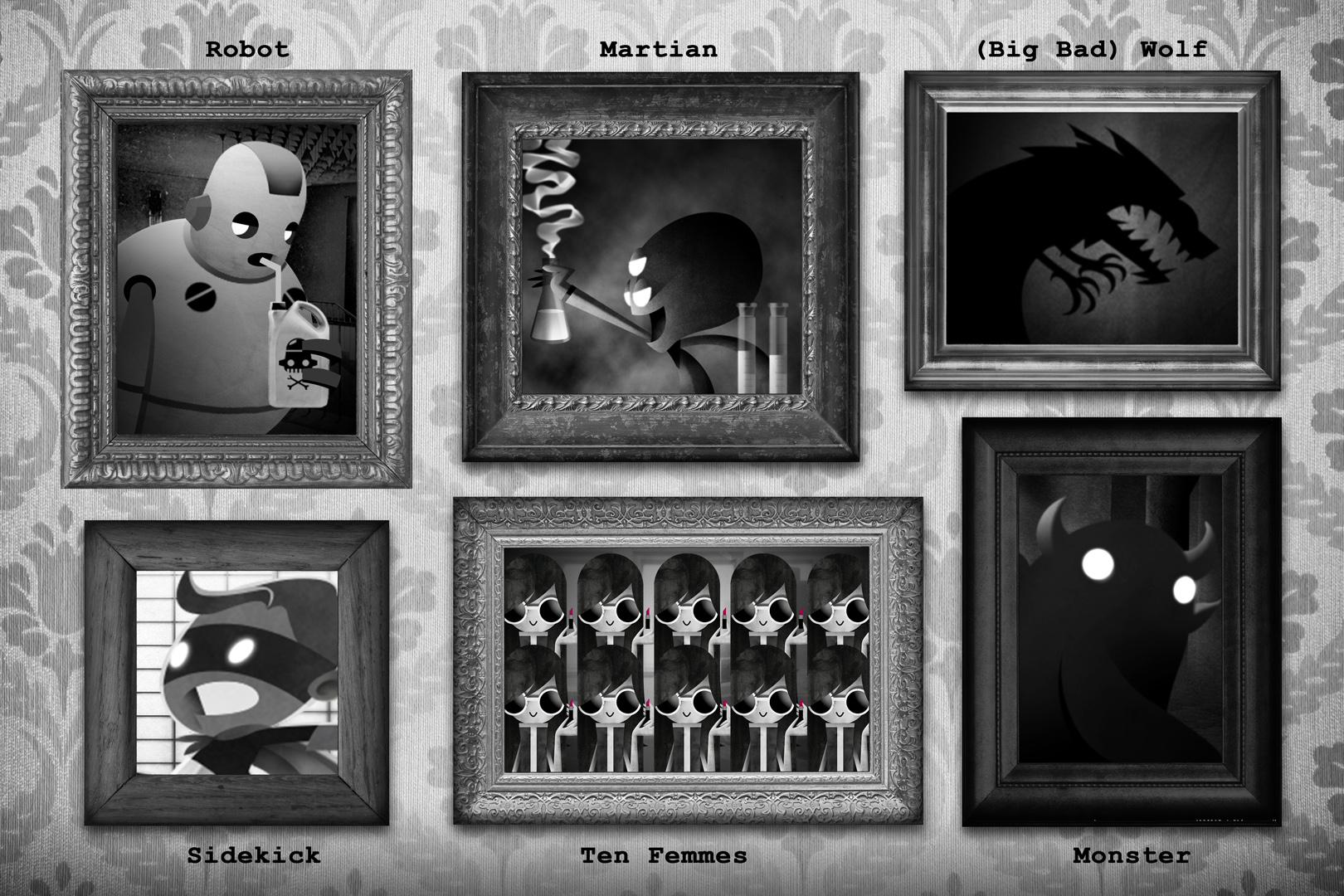“5 Story Building” by Muñoz
Conference:
Type(s):
Title:
- 5 Story Building
Presenter(s)/Author(s):
Abstract:
A mischievous Monster, a naive Sidekick, ten shallow Girls, a retired Villain, an apathetic Robot, and a Megalomaniac from outer space live under one roof in the “5 Story Building”. Five simultaneous stories tell the lives of the singular occupants of this confining building. These neighbors carry on with their own ambitions and inherited craziness without realizing that their stories are intertwined in this episodic interactive fiction.
Jean Paul Sartre and “Sleep No More” inspire this experience for digital tablets that explores the nuances and opportunities enabled by the introduction of interactivity in storytelling.
“5 Story Building” is intentionally crafted to show off things that traditional media cannot. This project explores the possibility of multiple simultaneous stories that are part of a bigger plot. These stories develop regardless if they are seen or not: the users’ decisions are not only about what they sees but also, and maybe most importantly, what they decide not to see.
Multiple readings are necessary and voyeurism is encouraged.
References:
1. Adams, C. 1987. “Why Are the Floors of a Building Called ‘Stories’?” The Straight Dope. http://www.straightdope.com/columns/read/501/why-are-the-floors-of-a-building-called-stories.
2. Akin, F., Attal Y., Balsmeyer, R., Hughes, A., Iwai, S., Jiang, W, Kapur, S., Marston, J., Nair, M., Portman, N., and Ratner, B. 2009. New York, I Love You. Comedy, Drama, Romance.
3. Anders, A., Rockwell, A., Rodriguez, R., and Tarantino, Q. 1995. Four Rooms. Comedy.
4. Bateman, C. 2005. “Diversity in Game Narrative.” Only a Game. http://onlyagame.typepad.com/only_a_game/2005/08/diversity_in_ga.html.
5. Brantley, B. 2011. “‘Sleep No More’ Is a ‘Macbeth’ in a Hotel – Review.” The New York Times. April 13. http://theater.nytimes.com/2011/04/14/theater/reviews/sleep-no-more-is-a-macbeth-in-a-hotel-review.html.
6. Caro, M., and Jeunet, J. P. 1992. Delicatessen. Comedy, Fantasy, Sci-Fi.
7. Coen, J. and Coen, E. 1991. Barton Fink. Comedy, Drama, 1991.
8. De La Iglesia, A. 2000. La Comunidad. Comedy, Crime, Mystery, Thriller.
9. Emursive and Punchdrunk. 2011. “Sleep No More”, n.d. http://sleepnomorenyc.com.
10. Gonz?lez I??rritu, A. 2000. Amores Perros. Drama, Thriller.
11. Gopalan, N. 2008. “Alan Moore Still Knows the Score!” Entertainment Weekly. http://www.ew.com/ew/article/0,20213004,00.html.
12. Guggenheim Foundation. “Picasso Black and White.” 2012. Guggenheim.org http://www.guggenheim.org/new-york/press-room/releases/4763-picassobw
13. Hiner, K. 2013. “Appidemic: iPoe 2 for iPhone, iPad and iPod Touch.” AppleTell. February 26. http://www.technologytell.com/apple/112910/appidemic-ipoe-2-for-iphone-ipad-and-ipod-touch/.
14. Ibanez, F. 1961. 13 Rue Del Percebe. B, 2009. ISBN-10: 8466640061
15. Johnson, B. n.d. “Second Story’s History.” Second Story. http://www.secondstory.com
16. Koenig, J. 2012. “Sonder”. Blog. The Dictionary of Obscure Sorrows. December, 2012. http://www.dictionaryofobscuresorrows.com/post/23536922667/sonder.
17. Kurosawa, A. 1951. Rashomon. Crime, Drama, Mystery.
18. Macaulay, D. 2005. Black And White. Houghton Mifflin Harcourt.
19. Moonbot Studios. 2012. “Morris Lessmore, the iPad App.” Morris Lessmore. http://morrislessmore.com/?p=app.
20. Ralph, P., and Wand, Y. 2009. “A Proposal for a Formal Definition of the Design Concept.” In Design Requirements Engineering: A Ten-Year Perspective. Lecture Notes in Business Information Processing. Springer Berlin Heidelberg. http://www.springerlink.com/content/xl5r311v08036716/abstract/.
21. Sartre, J. P. 1958. No Exit: A Play in One Act. Samuel French, Inc.
22. Schreiber, I. 2012. “Level 10: Nonlinear Storytelling.” Game Design Concepts. July, 2009. http://gamedesignconcepts.wordpress.com/2009/07/30/level-10-nonlinear-storytelling/.
23. St. Hippolyte, M. 1995. “The Boundaries: Limits of a Nonlinear Narrative Structure.” Dead Drop. http://inanimatereason.com/deaddrop/articles/nonlinear1.html.
24. Stevens, T. 2009. “Character-Driven/Plot-Driven.” Edittorrent. http://edittorrent.blogspot.com/2009/10/character-drivenplot-driven.html.
25. Traps, V. 2012. “MoMA Presents the Quay Brothers’ Work as Much More Than a Cabinet of Curiosities.” Capital New York. http://www.capitalnewyork.com/article/culture/2012/08/6441312/moma-presents-quay-brothers-work-much-more-cabinet-curiosities.





